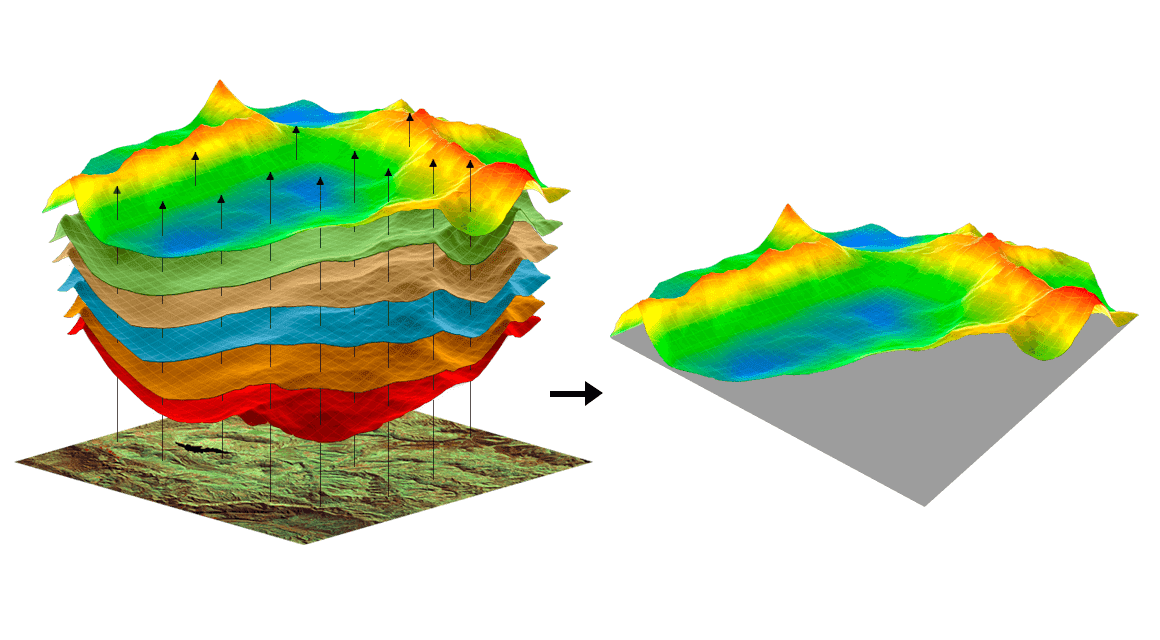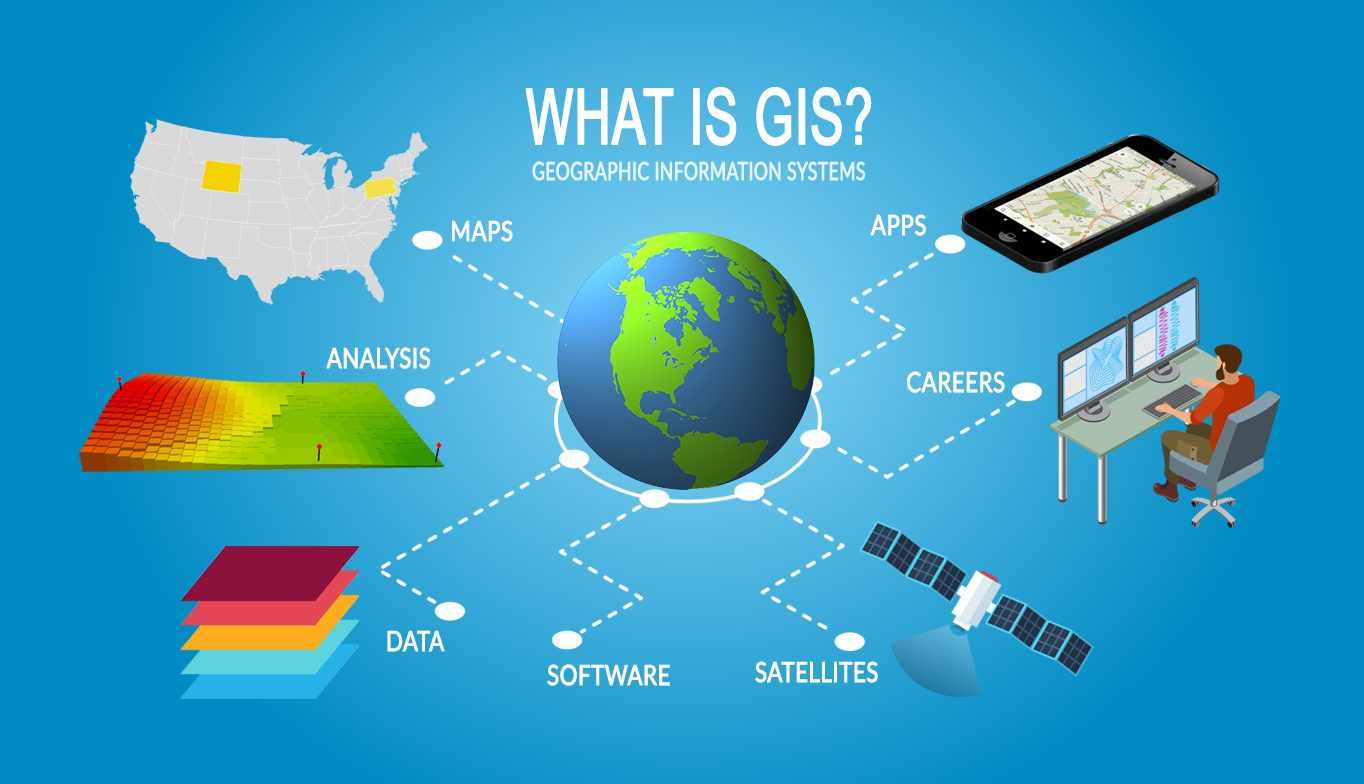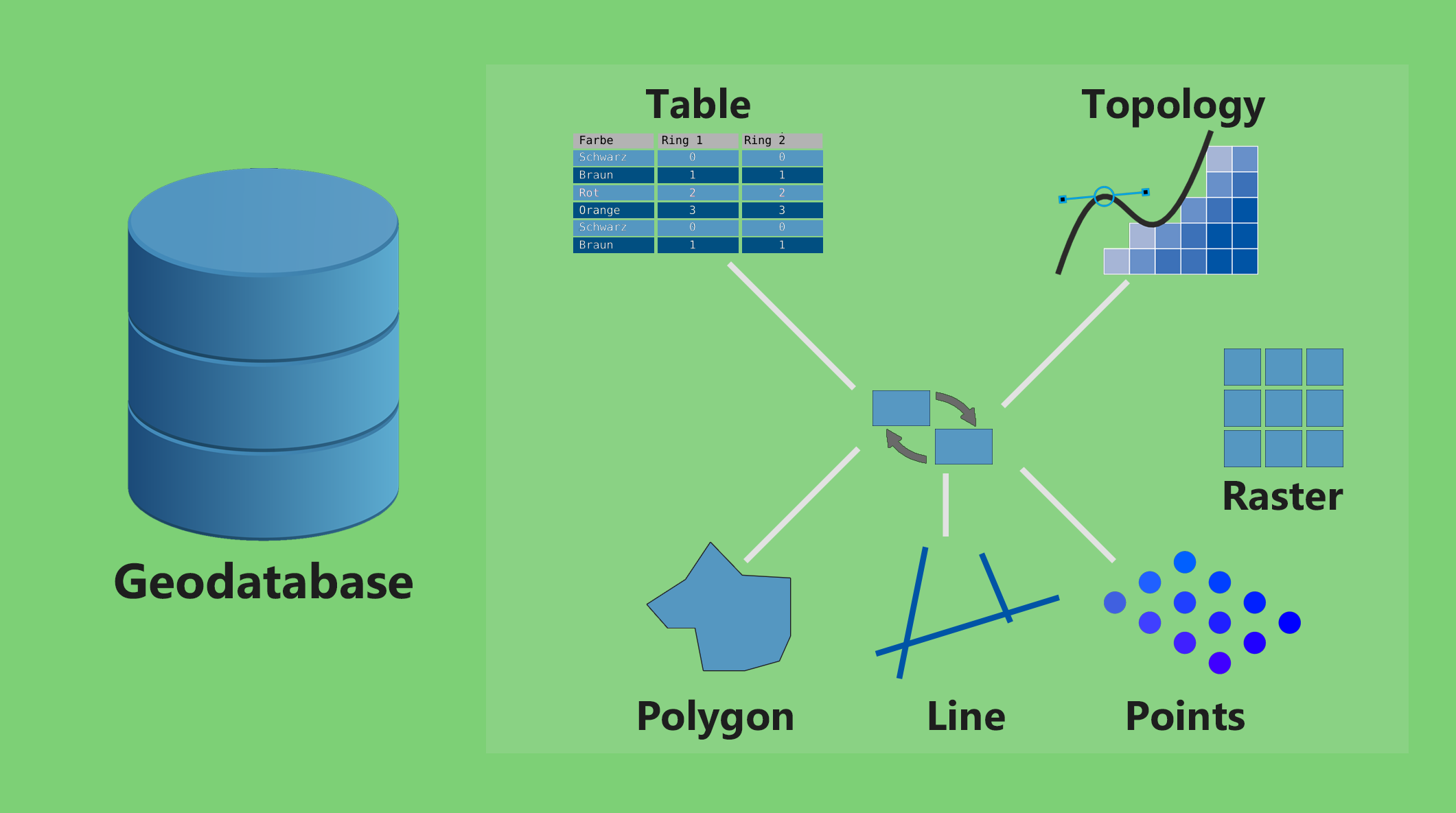Geospatial data is becoming increasingly important in how we understand and interact with the world around us. From everyday tools like Google Maps to large-scale urban planning projects, geospatial data is used to make decisions, improve services, and monitor environments in real time. But what exactly is geospatial data, and how is it applied in different fields?
What is Geospatial Data?
At its core, geospatial data refers to information that has a geographical or locational component. This data includes information on the physical location of objects or features on the Earth’s surface, represented by coordinates such as latitude and longitude. Unlike traditional data, geospatial data isn’t just about text, numbers, or categories—it also contains the “where” component, providing a spatial context.
Imagine you have a map of a city. Every road, building, park, and river is represented by geospatial data. But it’s not just about mapping; geospatial data is used to study trends, track changes over time, and make predictions based on spatial patterns. For example, governments can use geospatial data to monitor urban expansion or track natural disasters like floods and wildfires.
The Difference Between Spatial and Non-Spatial Data
A key distinction to understand is the difference between spatial and non-spatial data.
- Spatial data refers to data that includes geographical information—coordinates, maps, distances, and areas.
- Non-spatial data, on the other hand, does not involve a geographic element. For example, a list of customer names or product inventory data.
When you combine spatial data with non-spatial data, you get powerful insights. For instance, combining a list of cities (non-spatial) with their location (spatial) allows you to visualize and analyze patterns geographically.
Why Geospatial Data Matters
Geospatial data plays a vital role in many industries today. It helps us understand:
- Where things are located (e.g., buildings, roads, rivers)
- How things move (e.g., tracking vehicles, weather patterns)
- How spaces change over time (e.g., urban development, environmental shifts)
This makes geospatial data a critical tool for fields like urban planning, agriculture, disaster management, and even everyday applications like navigation and delivery services. It’s no surprise that the demand for geospatial technologies continues to grow across industries.
How is Geospatial Data Collected?
There are several ways geospatial data is gathered, each with its own technology and method. Some of the most common methods include:
- Satellite Imagery
- Satellites orbiting the Earth capture images and data, which can then be analyzed to track changes in the environment, weather patterns, and urban sprawl. These images provide a bird’s-eye view, offering vast amounts of data on a large scale.
- Aerial Photography
- Drones and airplanes equipped with cameras are often used to capture more detailed images of specific areas. These images are used in land surveys, construction planning, and environmental monitoring. For example, drones can survey farmland to help farmers optimize crop production.
- GPS (Global Positioning Systems)
- GPS is a system of satellites that provides location data to receivers on the ground. It’s what powers tools like Google Maps and helps people navigate by providing real-time location data. GPS is widely used in transportation, logistics, and personal devices like smartphones.
- Remote Sensing
- Remote sensing refers to the use of sensors to gather data from a distance, typically from satellites or drones. This method is especially useful in environmental monitoring, as it can detect things like temperature changes, land cover, and pollution without the need for direct contact.
- Surveying
- Surveying is one of the oldest methods of collecting geospatial data. Land surveyors use specialized tools to measure the exact positions of points on Earth. Surveying is still essential for creating accurate maps, planning construction projects, and defining property boundaries.
These methods enable the collection of a vast range of geospatial data types, from the layout of cities to environmental changes happening over time.

Types of Geospatial Data
Understanding the various types of geospatial data is crucial to grasp how they are used in different applications. Geospatial data can generally be divided into two main types: raster data and vector data. Each type has distinct characteristics, advantages, and use cases.
Raster Data vs Vector Data
Raster Data
Raster data is pixel-based, similar to how images are composed of pixels. Each pixel represents a tiny piece of the area being mapped, and each pixel can hold a value such as elevation, temperature, or color. Raster data is ideal for representing continuous data, such as satellite imagery, aerial photos, or elevation models.
- Examples: A satellite image showing land cover, a heat map showing temperature variations, or a digital elevation model.
- Use Cases: Raster data is commonly used in fields such as environmental monitoring, climate change research, and urban development.
One key limitation of raster data is its file size—high-resolution images can take up significant storage space and computational power.
Vector Data
Vector data represents geospatial data using points, lines, and polygons.
- Points represent discrete locations (e.g., a city, a landmark).
- Lines represent linear features (e.g., roads, rivers).
- Polygons are used to represent areas (e.g., city boundaries, land parcels).
Unlike raster data, vector data is more precise and is ideal for representing discrete features like buildings, roads, or political boundaries.
- Examples: The layout of a road network, the boundaries of a national park, or the location of fire hydrants in a city.
- Use Cases: Vector data is widely used in urban planning, transportation systems, and land use management.
Vector data is highly scalable and allows for more detailed analysis, such as determining the exact distance between two points or calculating the area of a specific polygon.
Attribute Data
In addition to spatial coordinates, geospatial data often includes attribute data, which provides additional information about the feature being mapped. For example, a point representing a city may also contain attribute data such as population size, average income, or elevation. This combination of spatial and attribute data makes geospatial analysis incredibly powerful.
- Example: A geospatial dataset of cities might include each city’s location (spatial data) along with its population, size, and climate data (attribute data).
- Use Cases: Attribute data is essential for any analysis that involves demographics, economic data, or environmental features.
Examples of Geospatial Data Types
Let’s explore some common types of geospatial data and their applications:
- Topographic Maps: These maps provide detailed information about the terrain, including elevation, mountains, valleys, and slopes. They are often used in outdoor activities like hiking, but they’re also essential in construction and infrastructure development.
- Weather Maps: Meteorologists use geospatial data to create weather maps that show temperature, precipitation, wind speed, and other weather patterns. This data is crucial for predicting natural disasters like hurricanes or tornadoes.
- Transportation Networks: Geospatial data helps map out transportation infrastructure such as highways, railroads, and air routes. Cities use this data to manage traffic flow, plan public transportation, and optimize delivery routes.
- Land Use Data: Maps that show how land is being used—whether for agriculture, urban development, forests, or conservation—are critical for planners and environmental scientists. They can track urban sprawl, monitor deforestation, or plan new parks and protected areas.
Comparison of Raster and Vector Data
| Feature | Raster Data | Vector Data |
|---|---|---|
| Representation | Pixels (grid cells) | Points, lines, polygons |
| Best for | Continuous data (e.g., temperature, elevation) | Discrete features (e.g., buildings, roads) |
| File Size | Large for high-resolution data | Smaller and more manageable |
| Analysis | Less precise, better for large areas | More precise, better for specific features |
| Common Uses | Environmental data, satellite imagery | Urban planning, land use, transportation |
This breakdown of geospatial data types highlights the flexibility and utility of each type in different real-world applications. By understanding whether raster or vector data is best suited for a given task, industries can make more informed decisions.

Real-World Example of Geospatial Data
One of the best ways to understand the power of geospatial data is through real-world examples. From everyday applications to large-scale industry use, geospatial data is embedded in how we interact with the physical world.
What Is an Example of Geospatial Data in Action?
Google Maps: The Everyday Example of Geospatial Data
When thinking of an example of geospatial data that most of us use daily, Google Maps comes to mind. This popular application integrates geospatial data from various sources, including satellite imagery, GPS data, and user-contributed information, to provide real-time navigation, traffic updates, and points of interest.
- How It Works: Google Maps collects GPS data from users’ devices to determine their exact location and provide turn-by-turn navigation. It also combines satellite imagery and aerial photos to offer detailed views of buildings, roads, and landscapes. The app uses vector data to represent roads, landmarks, and routes, along with raster data for overhead imagery.
- Use Cases: From finding the fastest route during rush hour to discovering nearby restaurants, Google Maps uses geospatial data to enhance our everyday lives. Businesses also use it for logistics, delivery services, and fleet management, making it an essential tool for modern transportation.
Why Google Maps Is a Strong Example of Geospatial Data:
- It merges multiple types of geospatial data (raster, vector, GPS, and user-generated data).
- It updates in real-time, offering live traffic conditions and alternative routes.
- It helps with personal navigation as well as business solutions (e.g., delivery routes for companies like Uber, DoorDash, or Amazon).
This example shows the pervasive use of geospatial data in day-to-day activities, demonstrating its value in both personal and professional contexts.
Geospatial Data in Urban Planning: Smart Cities
Another impressive example of geospatial data at work is in the creation and management of smart cities. As cities grow and become more complex, urban planners and governments rely on geospatial data to make informed decisions about infrastructure, transportation, and resource management.
Case Study: Singapore’s Smart City Initiatives
Singapore is known for its smart city initiatives, where geospatial data plays a critical role in urban planning and development.
- Traffic Management: Singapore uses geospatial data to monitor real-time traffic conditions. Sensors are installed across the city to collect traffic flow data, which is then used to adjust traffic signals and optimize road usage.
- Urban Planning: Using 3D geospatial data models, planners in Singapore design and implement infrastructure projects, including housing developments, road expansions, and green spaces. These models allow for precise planning, avoiding areas prone to flooding or other environmental risks.
- Public Transportation: Geospatial data is also used to track and manage public transportation, ensuring buses and trains run efficiently and adjusting routes based on population density and traffic patterns.
Key Benefits of Geospatial Data in Smart Cities:
- Improved traffic flow and reduced congestion through real-time monitoring.
- Efficient use of land for housing and public spaces based on accurate spatial data.
- Enhanced public transportation systems that adapt to population needs.
Through examples like Singapore, we can see how geospatial data contributes to the development of sustainable and efficient cities that improve the quality of life for their residents.
Geospatial Data in Environmental Conservation: Monitoring Deforestation
Geospatial data is also invaluable in environmental conservation, where it helps track changes to natural ecosystems. One of the most critical applications is in monitoring deforestation, particularly in regions like the Amazon rainforest.
Case Study: The Amazon Rainforest and NASA’s Use of Geospatial Data
The Amazon rainforest is one of the world’s largest and most vital ecosystems, but it faces ongoing threats from deforestation. Geospatial data, especially from satellites, is used to monitor these changes and take action to protect endangered areas.
- Remote Sensing: Satellites like those used by NASA and other space agencies capture high-resolution images of the Amazon. These images are analyzed over time to detect patterns of deforestation and illegal logging.
- Deforestation Monitoring: Geospatial data reveals areas where forests are being cleared, allowing governments and environmental organizations to take action. The data can show not only the scale of deforestation but also the speed at which it’s occurring.
- Reforestation Efforts: Conservationists use geospatial data to identify the best areas for reforestation, ensuring that trees are planted in regions that will have the highest impact on the ecosystem’s recovery.
Key Advantages of Using Geospatial Data for Conservation:
- Real-time monitoring of environmental changes.
- Data-driven decisions for reforestation and conservation.
- Better allocation of resources to protect vulnerable areas.
This case study underscores the importance of geospatial data in addressing global environmental challenges, particularly as it allows for continuous monitoring of large and remote areas.
These examples illustrate the wide-reaching applications of geospatial data, from navigation and urban planning to environmental conservation. Whether in everyday use or high-stakes global issues, geospatial data plays a crucial role in how we manage and interact with the world.

How Industries Use Geospatial Data
Geospatial data is transforming industries across the board by providing critical insights and enabling data-driven decision-making. The ability to visualize and analyze geographic information helps businesses and organizations optimize operations, manage resources, and improve services. Let’s dive into how some key industries use geospatial data to their advantage.
Geospatial Data in Agriculture
In modern agriculture, geospatial data is a game-changer, especially in precision farming. Farmers and agricultural companies use geospatial data to monitor crop health, optimize resource usage, and improve yields.
- Soil Mapping: Geospatial data helps farmers map soil conditions across large fields, identifying areas that need more or less irrigation, fertilizer, or pest control. Soil sensors can provide real-time data on moisture levels, helping farmers make informed decisions to increase efficiency and reduce waste.
- Crop Monitoring: Using drones and satellite imagery, farmers can monitor crops over time. These tools allow them to detect issues like disease outbreaks or drought conditions early on, minimizing damage and maximizing productivity. The ability to monitor large fields remotely also reduces the need for labor-intensive field inspections.
- Yield Prediction: By analyzing past geospatial data, farmers can predict future crop yields based on historical trends in weather, soil quality, and farming practices. This helps them plan better for harvesting, selling, and resource allocation.
Case Study: Precision Agriculture with Geospatial Data
A large-scale farm in the Midwest U.S. uses satellite imagery and drone technology to monitor crop health. By overlaying soil data with satellite images of the crops, the farm is able to pinpoint which areas of the field are struggling. The farm then adjusts irrigation and fertilizer distribution, ensuring each section gets the right amount of resources. This has led to a 15% increase in crop yield and a significant reduction in water usage.
Geospatial Data in Disaster Management
When it comes to disaster management, geospatial data plays a vital role in predicting, preparing for, and responding to natural disasters. From floods to wildfires, geospatial data helps emergency teams and governments minimize the damage and save lives.
- Flood Monitoring and Prediction: Geospatial data, especially from remote sensing and weather satellites, allows authorities to track water levels in rivers, reservoirs, and coastal areas. This data helps in creating flood prediction models and alerts communities ahead of potential floods. By understanding which areas are at risk, governments can prepare evacuation routes and deploy resources more efficiently.
- Wildfire Management: Geospatial data is also crucial in tracking and managing wildfires. Drones and satellites equipped with thermal sensors can detect hotspots in real time, allowing firefighting teams to prioritize their efforts. Geospatial data can also map out the direction and speed of a wildfire’s spread, helping to protect vulnerable communities and ecosystems.
- Earthquake Damage Assessment: After an earthquake, geospatial data collected from aerial surveys and satellite imagery helps in assessing the extent of the damage. This data is used to map affected areas, identify where aid is needed most, and plan recovery efforts.
Case Study: Geospatial Data and Wildfire Response in California
In California, where wildfires are a constant threat, the state uses geospatial data from NASA’s Terra and Aqua satellites to monitor wildfire risks. These satellites provide real-time imagery that shows the location and intensity of fires. By overlaying this information with wind data, emergency teams can predict the path of a fire and respond accordingly. This proactive approach has helped save lives and protect property during wildfire season.
Geospatial Data in Healthcare
In healthcare, geospatial data provides valuable insights into public health trends and helps in managing healthcare resources more effectively.
- Tracking Disease Outbreaks: Geospatial data is used to map and track the spread of infectious diseases like COVID-19, malaria, and cholera. By mapping infection clusters, health officials can identify the areas most in need of intervention, quarantine measures, and medical resources.
- Healthcare Access: Geospatial data can also be used to analyze healthcare access in different regions. By mapping the location of hospitals, clinics, and pharmacies in relation to population density, policymakers can identify gaps in healthcare services and work to address these disparities. This is particularly important in rural or underserved communities.
- Resource Allocation: During crises, geospatial data helps governments and NGOs allocate medical resources such as vaccines, personal protective equipment (PPE), and medication to the areas most in need. It ensures that critical supplies reach high-risk populations as efficiently as possible.
Case Study: Geospatial Data and COVID-19 Management
During the COVID-19 pandemic, many countries used geospatial data to track the spread of the virus and implement lockdowns accordingly. Real-time maps showing COVID-19 cases, hospital capacity, and testing sites were critical in managing the pandemic. For instance, South Korea used a geospatial tracking system to monitor people who had been in contact with COVID-19 patients, helping to contain the virus quickly and effectively.
These examples demonstrate the broad and impactful uses of geospatial data across different industries. Whether in agriculture, disaster management, or healthcare, geospatial data enables smarter decision-making and enhances the efficiency of operations.